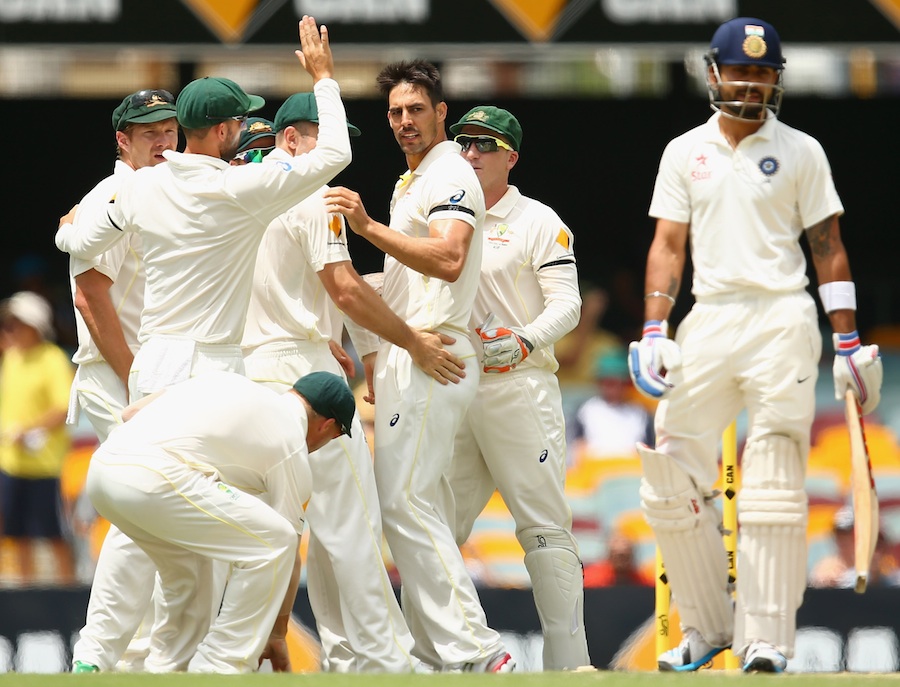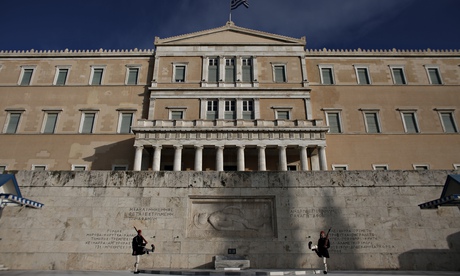The closer you want to get to eradicating the menace of terrorism, the bigger this menace seems to get.
For the past week, following the attack in Peshawar, our leaders, both in Khaki and Mufti, have deliberated and deliberated. But this piece is not about them and the solutions they might come up with. It is about the sociology of the mindset that either justifies or rationalises terrorism, or impedes tangible action against it.
It is about the failure of the state and the society to come up with a narrative that can defeat the terrorists.
Terrorists of all hues — Al Qaeda, Tehreek-e-Taliban Pakistan and its countless affiliates, Afghan Taliban and its affiliates like the Haqqani network, India-focused terror groups like Lashkar-e-Tayyaba and sectarian terror groups like Lashkar-e-Jhangvi — use two weapons: incredible hatred towards their victims and a narrative to convince and recruit new supporters to the cause.
This narrative of victimhood, denial and conspiracy theories can easily be deconstructed and dismantled. But what with the rising anger in the country, fracturing of the society and the general iffiness of the times we live in, no one has done anything substantial about the issue despite harping on about it at great length.
It is time we change that.
After 9/11, the United States knew whom to blame and the nation’s anger was projected outwards. After 7/7, the United Kingdom knew whom to blame, and the country was able to vent its anger. After Mumbai attack, India too, vented its anger on Pakistan and somehow managed to cool off.
In Pakistan, though, where the state had pandered to extremist inclinations for long, at the time of 9/11 there was a dictator in place, whose rise to fame and then power owed a lot to the Kargil debacle. When General Musharraf decided to take a U-turn in his Afghan/Taliban policy, he gave his people the wrong reasons for doing so.
Instead of telling them that extremism of all kinds is bad for the country; that it can easily turn against the country's own people and that nation states are held accountable if found guilty of exporting destabilising ideologies beyond their borders; he told the nation that had Pakistan not taken the step, it would have been bombed back to the stone age.
That was an admission not of flawed policies but merely of foreign pressure.
At the time, there was neither any parliament nor the free media we see today. Lack of proper debate turned the country’s anger inwards. Later, conspiracy theories of sorts would emerge, people living in denial would scavenge western media sources for whatever half-truths would fit into their narrative.
Today, we have a developed popular narrative which says that Islam is in danger, that Pakistan is about to break; all of this is linked to belief in the end of time.
All faiths have eschatological predictions. Since each brand of 'endism' focuses on end of the universe, the predictions are found to be dire and can easily be exploited at any time of adversity. Our local religious extremists and televangelists have very effectively inserted these prophecies into the reactionary narrative. By raising doubts about some of the most well-documented historical developments and mixing it with this narrative, the terrorists have managed to win over a host of fence-sitters.
Just textbooks or more?
A oft-made point is the ideological indoctrination in school textbooks. It is said that our books preach hate and a distorted version of history which unhinges a young impressionable mind from the very beginning.
Be that as it may, such a thought is predicated on the assumption that all Pakistanis go to school and imbibe every word written in the textbooks. While there is no justification of hatred finding way into the school books, these books barely play even a secondary role.
Even if the textbook is saying a certain thing, what the teacher thinks and what the best friend thinks matters much more to the pupil than what is written in the book. A young child spends more time with friends, family and in front of television.
So while it is important that the curriculum must be reformed, let us not lose sight of the fact that the problem is of understated heart-to-heart oral tradition which transmits through culture.
As a child, for instance, I usually internalised much of what my father used to think with considerably less resistance, and when I met my friends, our individual sets of views would collide with each other, evolving into something new altogether.
The tragedy of television
The quality of our television news product is quite important here. In the 24/7 live news cycle where a talk show host and a news director are forced to operate at breakneck speed and take decisions on the fly, very little thought is given to quality or for that matter, narrative.
Then there is the matter of the presence of Taliban and terrorist apologists amongst our midst, which creates a problem because while the moderate majority is too divided and disorganised, the sympathisers of terrorists are very well organised and persistent. So, the resultant end product invariably confuses viewers instead of clearing their minds.
But that is not all. The reason why viewers watch our news channels a lot is because our entertainment industry has been underperforming for a decade. The power of a drama serial should not be underestimated. A playwright can say things which are difficult or impossible to say on news channels.
Sadly, however, while a debate is underway to curtail the appearance of sympathisers of terrorism on live news networks, the storytelling in the entertainment industry still remains with the same forces who played a critical role in indoctrination.
As a result, the teleplays on political matters are often found to be highly reactionary, irrational and riddled with conspiracy theories.
Hostage crisis at the pulpits
Prayer leaders don’t usually go to regular schools or watch television; their tradition is essentially oral. There is no doubt that religious seminaries (some of which are genuinely committed to spreading hate) play a crucial role in forming their worldview. But it is daily interaction with other religious-minded people and groups (Tableeghi Jamaat for instance), the availability of vast amounts literature and personal assumptions which consolidate their distorted perceptions.
The threads which feed their mindsets, some of which I have reproduced below, are of such a nature that every maulvi gets ensnared in the enemy’s propaganda with very little resistance. The message from the pulpit, may it be in the shape of the Friday sermon or the after-prayer dua, is essentially highly reactionary and counter-productive, to say the least.
What we need right now is a supply of religious scholars of integrity who can answer these questions with comfort and authority to reclaim the narrative in the mosques from the terrorists.
The terrorist's narrative
Here are some assumptions that play a crucial role in the terrorist and his sympathiser’s narrative:
Islam is in danger:
Muslims are scattered all over the world. Given their recent turbulent history it is claimed that Islam as a faith is on the brink of extinction and only violent jihad can save it. One look at the 1400 years of their history and you realise that the faith can take care of itself and needs no saviors.
These are end-of-time wars:
Islamic eschatology predicts the arrival of an Antichrist called Dajjal, and it is said that whoever chooses to side with him will never be forgiven. Now, years of propaganda has projected the West as that Antichrist. Ergo the fear that is easily exploited by terrorists.
Muslims all over the world, owing to the absence of timely 'ijtehad' or interpretation, have found it difficult to integrate with local cultures. After every two or three centuries, they are confronted with challenging times and start thinking this is the end of time.
A careful survey of Islamic literature shows no timeframe is originally given about the end. In expert hands, this element of doubt should be enough to debunk the terrorist’s propaganda.
Muslim ideal is a pan-Islamic Caliphate:
The current schools of thought in Islam took their final shape almost a millennium ago. As further debate could generate controversy, no one showed interest in challenging these dated interpretations. That era was the time of empires and nation states did not emerge until much later, till the treaty of Westphalia.
Hence, the last political model known to the Islamic thought is a theocratic Muslim empire called the Caliphate.
Itself an interpretation, this model is highly outdated and inefficient. The Ottoman Empire was a big example of the inefficiency. However, terrorists and a long list of intellectual movements (like Hizbut Tahrir) that serve as bedrock for them, use this thought to recruit new volunteers.
If, however, you study the formative phase of Islam, you will notice that Islam as a faith is not averse to the idea of a nation state. That is another thought which can be expanded to counter the terrorist’s narrative.
Muslims are victims:
Terrorists exploit the all-pervasive feeling of Muslim victimhood to their advantage. It is stunning to see that this perception has lingered on in our country for this long.
Pakistan has accumulated over 50,000 dead bodies as gifts given to it by these 'saviours' of Muslims. How hard can it be to expose these people for who they really are?
Pakistani state is fighting terrorism due to foreign pressure:
I have explained this point at length at the start. The state must own this war and explicitly state that it is being waged for the nation's good, not under international pressure. It's a promising sign that the government is finally doing that. It will also be helpful if foreign countries didn’t appear to be pressuring the country to do more. Any concerns can be conveyed through the diplomatic channel; negotiating through the media should stop.
Democracy is evil and un-Islamic:
This, too, is an ugly propaganda tool. Democracy as the cultural 'other' is used to lure people in to the extremist side.
A bit more sensitisation about democracy and exploration of political thought in Islam would make it plain that democracy is not antithetical to the original teachings of Islam. What we lack is religious interpretation on the matter. It is tragic that no coherent work has been done in this regard during the past 13 years of fighting terrorism.
Terrorists are good Muslims:
Somewhere in their heads is this deep seated regimentation that at the end of the day, the terrorist's demand — imposition of Shariah — is a legitimate one, and so it's wrong to fight them.
This is one of the terrorist’s biggest weapons. Again, the havoc these terrorists have wreaked should speak for itself. But since, for a large number of people, it appears to have not done so, we need organised campaigns to educate the public of the real context and designs of the terrorist movement. It would help if religious figures of authority came forward shattered the myth of 'good terrorists'.
Foreign powers are doing it and blaming it on unsuspecting religious groups:
The proscribed terrorist organisations take responsibility and post videos as proof. All the apologists contributing to an alternative explanation can be and should be confronted in this regard. This can bear fruits.
Pakistan was conceived as a religious state hence it should cave in to the extremist pressure:
You will find this argument widely available in the society. But given that terrorists are essentially against Pakistani state, the state will also have to end its ambivalence on the issue and come up with an identity of the state which is not entirely dependent on religion. It is not that difficult to find such an interpretation.
These are some of the assumptions that the terrorists play with. The state’s reluctance to address them has led to the current proliferation of terrorist outfits. It has played a crucial role in the birth and growth of such organisations. Now, it cannot shut its eyes to their mutating ideology and pretend that the problem will go away. It knows their language, it can speak to them. I understand that it is not easy to control every Friday sermon and talk in every mosque and madrassah. But if the state comes up with a coherent narrative and sells it to the opinion makers, the terrorists’ narrative can easily be undone.
Political and democratic ownership is essential because in the past lack of it has ruined the effort. The state knows how to highlight the narrative and sell it in the media and elsewhere despite resistance from the apologists.




